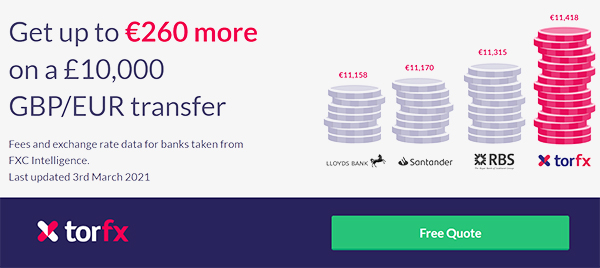Pound to Dollar Week Ahead Forecast: Buy the Dip

STORY LINK Pound to Dollar Week Ahead Forecast: Buy the Dip

Goldman Sachs expects that the Bank of England, Federal Reserve and ECB will all cut rates in June with the Pound to Dollar exchange rate (GBP/USD) strengthening to 1.35 on a 12-month view.
According to HSBC the Pound will eventually lose ground; “We think that the main driver of the likely weakness for the GBP is the slow but clear pivot by the BoE towards a more dovish stance.”
The Pound to Dollar (GBP/USD) exchange rate posted significant gains during the week with an advance to 7-month highs just below 1.2900 after breaking above the 1.2730 area.
The Pound secured little in the way of support from domestic developments with the gains triggered by a soft dollar and robust risk conditions.
The US S&P 500 index hit fresh highs during the week with the overall market mood boosting risk-sensitive currencies such as the Pound while the dollar lost ground amid a lack of defensive support.
The UK budget delivered no fireworks and from a market perspective was close to a non-event.
Chancellor Hunt delivered a further 2% cut in National Insurance rates from April, but this measure had been released ahead of time and there were no significant surprises in the statement.
A reduction in National Insurance rates will help underpin spending power, but the overall tax burden will still increase and there was no net upgrade in the OBR GDP growth forecasts.
At this stage, markets expect the Bank of England will cut interest rates after the Federal Reserve which has underpinned the Pound.
The equation will inevitably change if the data backs a BoE rate cut in or before June.
HSBC commented; “The UK still faces a challenging inflation-growth mix, making it hard for the BoE to remain a more hawkish outlier in the G10 space. As the BoE catches up on the dovish side with other central banks, the GBP could face more downward pressure in the months ahead.”
US data overall suggested that the labour market is easing.
The headline increase in non-farm payrolls for February was again notably stronger than expected at 275,000 compared with expectations of close to 200,000, but the January increase was revised sharply lower to 229,000 from the original reading of 353,000.
There was a reported decline in the number of employed of over 180,000 and the unemployment rate increased to 3.9% from 3.7%.
As far as wages are concerned, there was a 0.1% increase after a revised 0.5% increase the previous month with a slight slowdown in the annual increase to 4.3% from 4.4%.
MUFG noted wider evidence of a weaker labour market; “The NFIB Small Business Hiring Plans Index fell to the weakest since the pandemic period, the services ISM Employment index fell back below the 50-level and the manufacturing ISM Employment index 3,6 and 12mth averages all fell to the weakest levels since the pandemic.”
According to ING; “US nonfarm payrolls rose 275k in February, but big downward revisions, weak wages and rising unemployment suggest things are not quite as robust as the headline indicates. Moreover, lead indicators are clearly weakening and a slowdown looks to be on the way.”
In congressional testimony, Fed Chair Powell indicated that rate cuts were realistic relatively soon.
According to Powell, “We’re waiting to become more confident that inflation is moving sustainably at 2%. When we do get that confidence, and we’re not far from it, it’ll be appropriate to begin to dial back the level of restriction.”
Markets priced in around an 80% chance that there would be a rate cut at the June meeting.
ING commented; “The overall message delivered by Powell in this round of Congressional testimony has focused on patience and caution on the inflation outlook. However, Powell has also remained confident about the disinflation process, despite the recent unsupportive data, and said that the Fed is not far from having the confidence to cut rates.”
It expects a June rate cut.
Credit Agricole sees historic evidence for a weaker dollar at this stage of the economic cycle; “We look at the FX market impact of the Fed easing cycles, US recessions and presidential elections since 1973. Our results suggest that the USD tended to lose some ground in the run-up to and in the early stages of past Fed easing cycles.
Political risk premiums will gradually increase over the next few months.
Credit Agricole also looks at the potential impact of the November US Presidential and Congressional elections.
Opinion polls suggest a tight race between Trump and Biden with some evidence that Biden’s ratings have edged higher.
According to Credit Agricole; “Most FX investors seem to assume that the prospect for a Trump victory would embolden the USD-bulls for two reasons: (1) the risk of US tariffs and a re-escalation of the global trade war; and (2) the prospect for improved governance in Washington DC especially if the GOP keeps its majority in the House and regains a majority in the US Senate.”
International Money Transfer? Ask our resident FX expert a money transfer question or try John’s new, free, no-obligation personal service! ,where he helps every step of the way,
ensuring you get the best exchange rates on your currency requirements.
TAGS: Pound Dollar Forecasts
Source link






